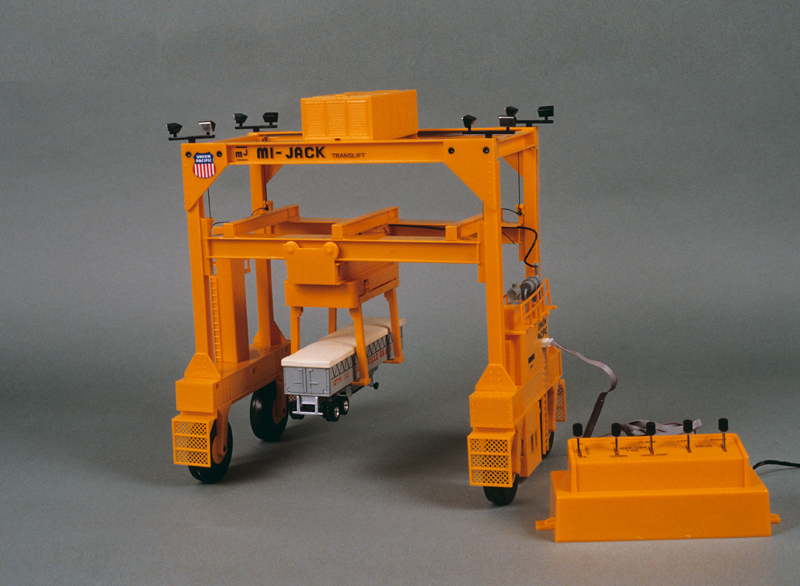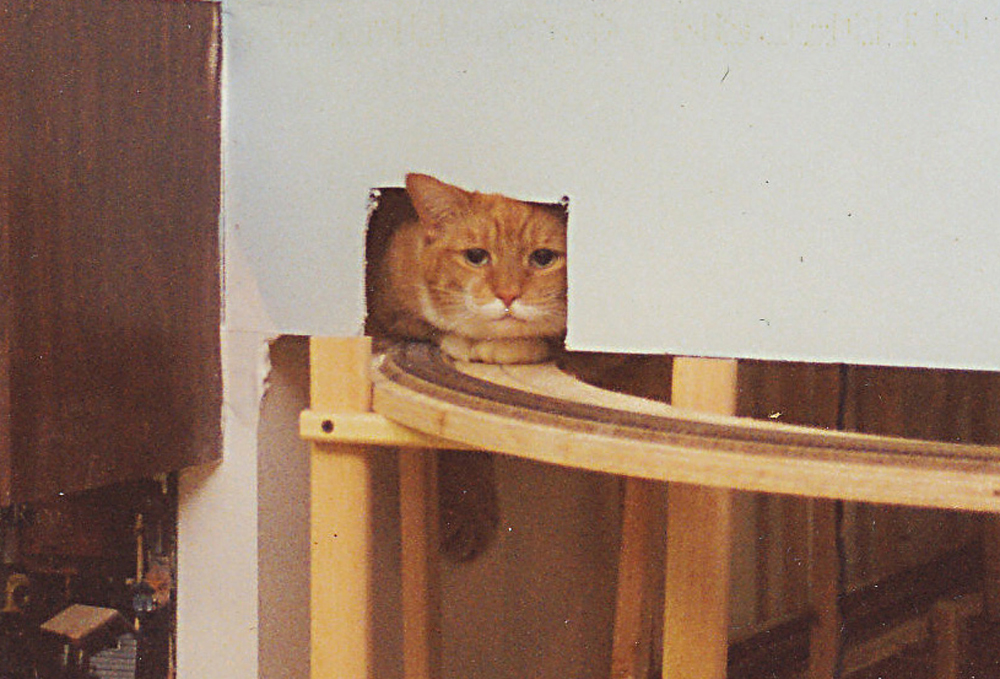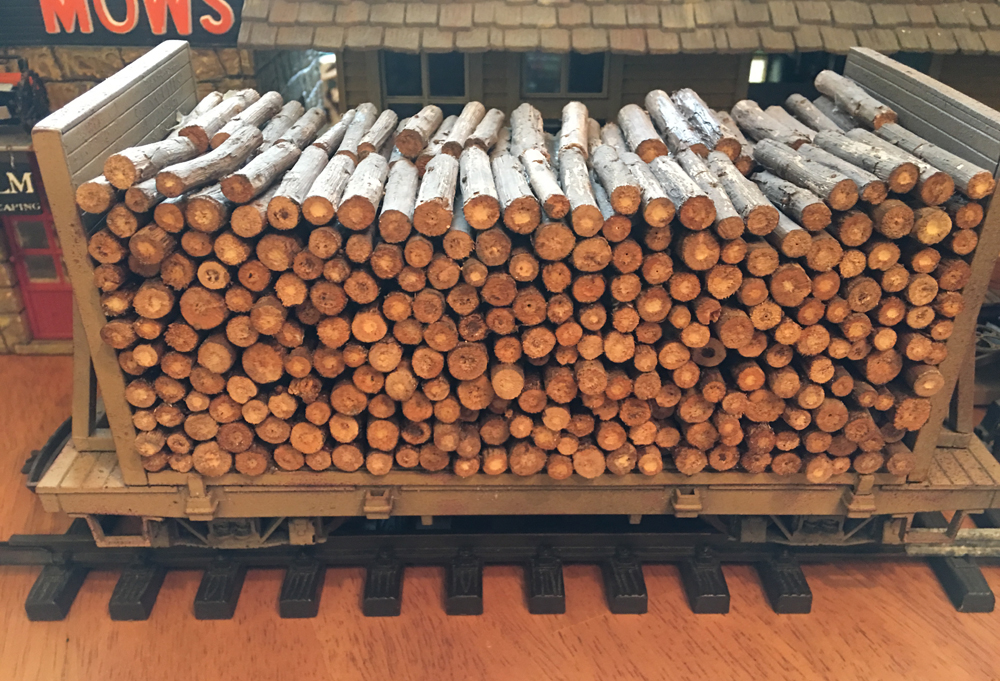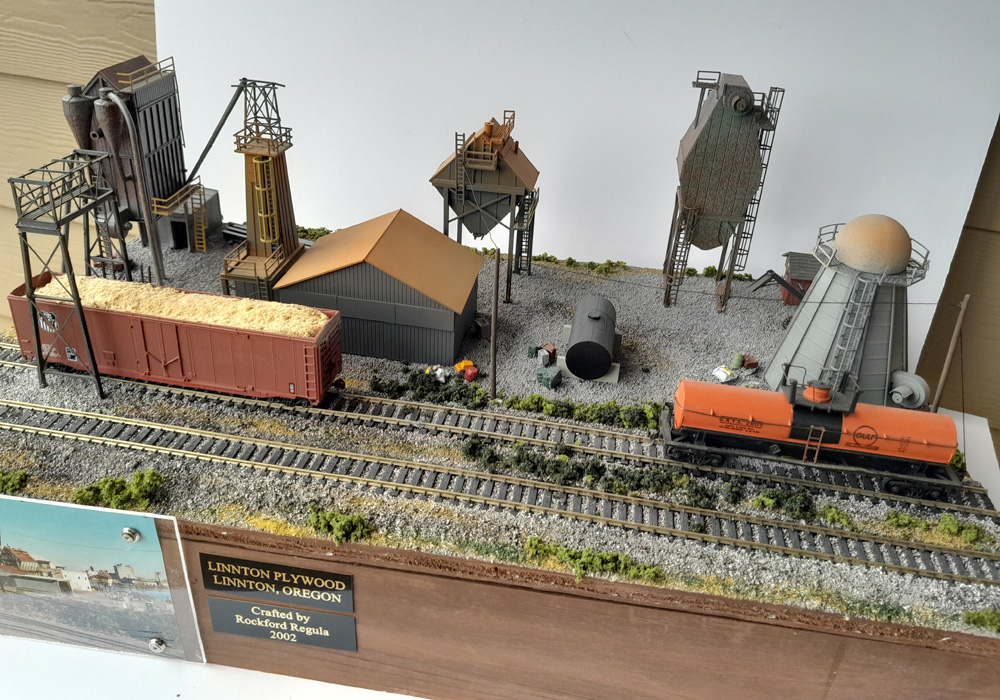Prewar predecessors
Cranes that can lift miniature cargo, rotate as they hold it, and lower it into a tray or a piece of rolling stock have been toy train staples since the first part of the 20th century. Perhaps the first such accessory made in America – certainly, the most celebrated of the prewar era – was the Dorfan no. 70 crane. The electrified operation relied on a hook to snag freight.
The next step in the evolution of cranes for toy train layouts came on the eve of World War II. In 1940, both Lionel and its up-and-coming rival, the A.C. Gilbert Co. introduced operating cranes equipped with electromagnets so they could pick up bits of metal scrap. These remote-controlled accessories enabled a modeler to imitate an impressive activity on a layout by pressing a few buttons.
Going strong after the war
The American Flyer No. 583 electromatic crane broadened Gilbert’s new S gauge roster between 1946 and 1953. Lionel, meanwhile, decided to update the appearance of its crane. Dispensing with the old No. 165, it cataloged the more realistic No. 182 triple-action magnetic crane from 1946 through 1949.
Then Lionel abandoned the scrap business. Only its roster of crane cars let kids grab small items, although the No. 6460 lacked an electromagnetic feature.
Executives and engineers at Lionel realized all along that cranes had been solid sellers. Improving the electric crane made more sense than neglecting it. So the No. 282 portal gantry crane made its debut in 1954. Never before had a toy train company offered a crane that could be moved forward and back along rails. Wheels installed in the ends of the four legs were the key to pushing the 282.
30 years later
For reasons only the leaders at the Lionel Corp. would have known, they deleted the portal gantry crane from the cataloged line after only four years. The sole reason that comes to mind is that this updated accessory sold poorly.
That was it for cranes in O or S gauge for the rest of the postwar period. When General Mills, which leased the rights to make Lionel trains, entered the crane business, it did so only with manual versions of the old portal gantry crane.
Fortunately for contemporary operators, the designers at Lionel Trains Inc. broke out of this torpor. They were aware that the shipment of trailers and containers dominated life on the rails. Besides creating O gauge models of modern trailers and flatcars, they saw a need for a crane to lift them.
In ports and rail yards, movable “structures” pick up and move containers. The operator first drives the structure into position over the load. He extends four “arms” down from the structure’s center section after shifting it into position above the container. The arms lower and grasp the underside of a container before hoisting it up and then placing it on a tractor-trailer rig or an intermodal railcar.
One amazing model

The 12741 intermodal crane makes it possible for a modeler to go through the same process on an O gauge layout. The accessory can move forward or back and swing right or left to reach a miniature plastic container. Then, thanks to the two can-style motors, it can grasp the container and load it onto a flatcar or intermodal car. The controller with five levers demands patience and practice.
LTI released the 12741 in 1989 and cataloged it for only one more year. The unpainted yellow plastic accessory had a red-white-blue Union Pacific herald on top, along with black lettering on the side. The trademarked Mi-Jack Translift name was printed across the center. Nearby were black simulated spotlights that didn’t illuminate. Lionel did not pack a container with the crane.
Lionel cataloged the No. 12741 Union Pacific Mi-Jack intermodal crane from 1989 through 1990.
Buyer’s Checklist:
- Bent or stuck movable intermodal crane assembly?
- Damaged or marred upper yellow plastic platform?
- Cracked or missing black simulated spotlights?
- Broken or stubborn five-lever accessory controller?
- Fully operating gears and crane mechanism?














A fascinating accessory designed to frustrate operators. Many small plastic parts, especially drive gears, that require near-constant adjustment and replacement. Great when it works, a mess to fix when it doesn’t. Short model run makes most parts impossible to find, and taking this huge accessory anywhere for service makes you popular at the service center, standing there with your enormous box covering the counter. A case of over complexity ruining a simple idea. Stick to gantry cranes.